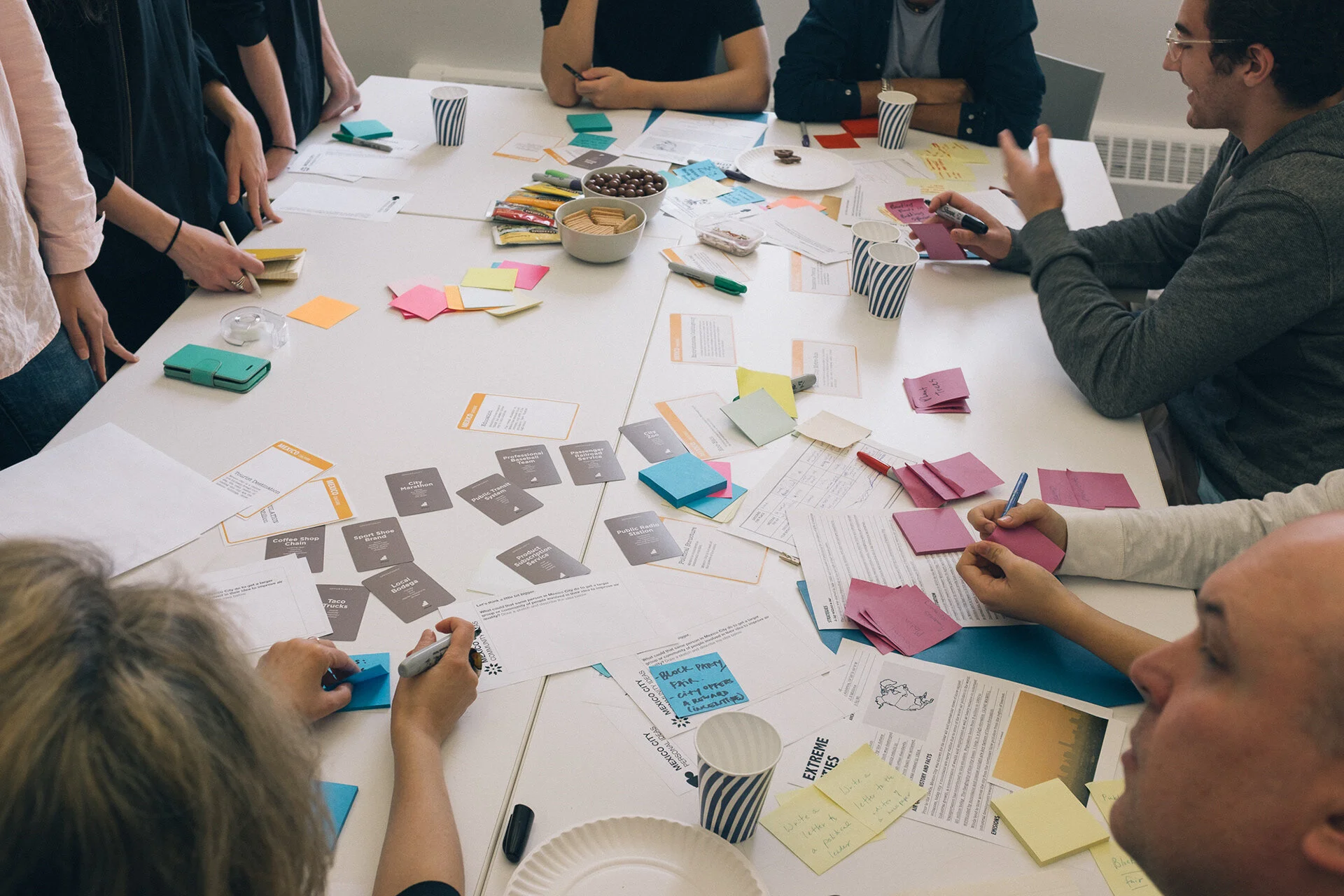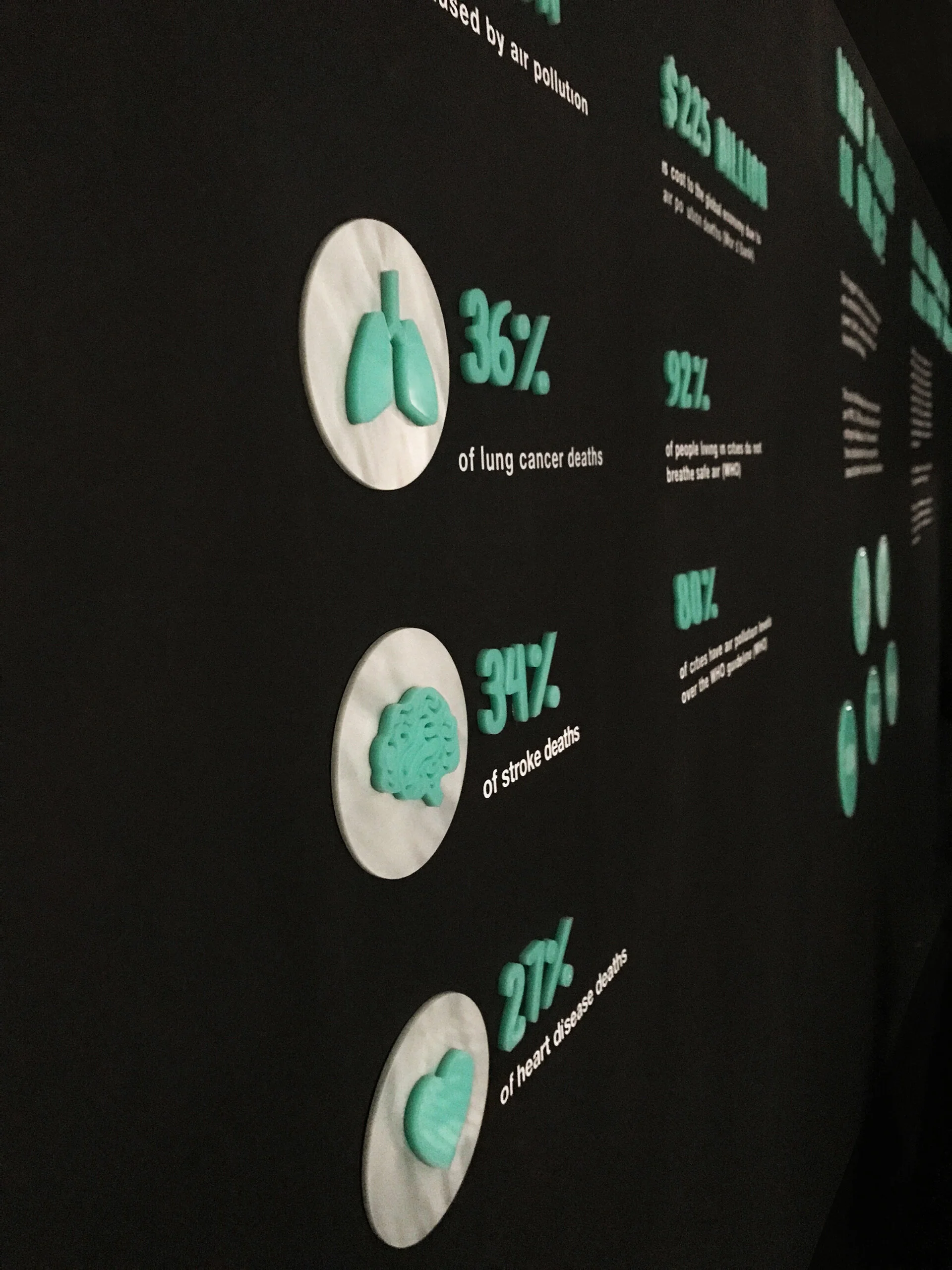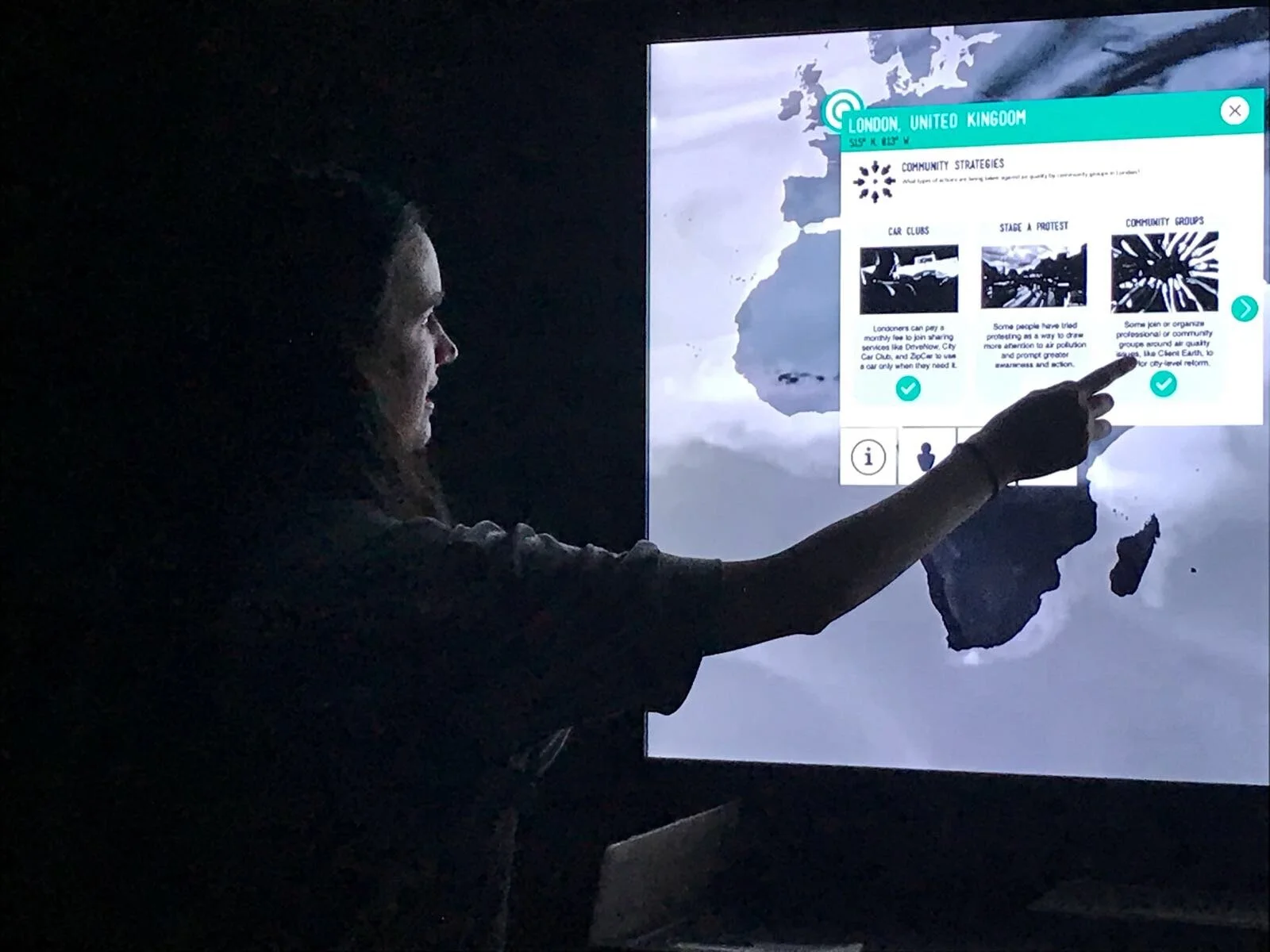Overview
AQtivate is a temporary, interactive installation strategically placed in cities that experience the negative effect of air quality but haven't yet developed the strategies to deal with it. It aims to activate citizens by encouraging them to start creating small changes on their own, to start encouraging a broader conversation among their community, and to start demanding action from their city.
AQtivate was developed during the Studio Project: CLIMATE SENSING FOR ENVIRONMENTAL FUTURES ''Reframing citizen engagement with urban climate systems'' in the Parsons' program M.F.A Transdisciplinary Design program as part of a new initiative by Parsons DESIS Lab. The course aimed to investigate the new roles and forms of citizen engagement related to climate change in the decades to come. The specific case study was air quality in urban settings.
Introduction
Cities all over the world have started to see the effects of extreme air pollution— in the air, in the data, in the growing numbers of respiratory illnesses and deaths due to air quality issues. While certain cities are working to clean up their air (e.g. London, Beijing), not all cities that experience extreme air are taking extreme action. Our project aims to leverage air quality solutions pioneered in extreme cities around the world to raise awareness and prompt action in cities that experience extreme air, but have not started to take strong action to protect against air pollution.
Research
During the research phase we reviewed literature, had conversations with experts, ran two co-creation sessions and did an exhaustive research of strategies implemented by extreme cities. We were very curious about what prompted people to take action towards air quality, whether with the objective to reduce emissions or to take care of their health. That took us to examine when and where action was taken. We explored the strategies and actions that extreme cities were implementing. At the same time we had a hunch if we make air quality information meaningful and relevant it can prompt action.
AQtivate
Possibilities for citizens to take actions to improve air quality in their cities.
Timeline: August-December 2018
Team: Pamela Lama and Whitney Mapes
Role: Design Research, Exhibition Design, Information Design, Motion Design
Collaboration: Bruce Doddgrigge from NASA Langley, Alyssa Creighton from NYC Center for Health Equity, Jennifer Gabrys, and Dalton School students.
Approaches: Participatory Design, Co-Design, Design-Led Research.
Findings
There are many cities that are very close to having the same levels of poor air quality of London, Mexico City, Los Angeles, or Shanghai, but they are not taking any measures in that regard.
It seems that a lot of people are not informed about air quality effects and in consequence they don’t take any action.
Some people are informed about air quality effects, and want to take action, but don’t know how to take action or what actions to take.
A lot of people are not aware of the importance of their role in taking action towards air quality. Either to reduce the bad air quality or reduce effects of air quality in their health.
Design Proposal
AQtivate is a joint, global initiative between the UN and the WHO whose mission is to activate cities around the world on the issue of air quality. Our primary program is a temporary, interactive installation that's strategically placed in cities that experience the negative effect of air quality but haven't yet developed the strategies to deal with it. It prompts action and aims to activate citizens by encouraging them to start creating small changes on their own, to start encouraging a broader conversation among their community and to start demanding action from their city.
The installation is set up in a two story customized shipping container and located on a main public walkway through the city center where plenty of people pass by daily allowing us for a broad reach. Each part of the installation acts as part of a strategy to achieve these two goals:
1. Educate people and create awareness about air quality
2. Provide the tools to take action
Second Floor
The second floor is mostly about awareness and education on a global scale and on a local context of the city. It is composed by two walls:
Global effects wall: its main purpose is to show people the global impact of air pollution on our health and economy with an emphasis on the cities that have already taken action. It shows what is hiding in our air, the biggest sources of air pollutants in cities as well as the health effects of bad air quality. The last part of this wall is a comparison of 10 global cities in terms of air pollutant PM 2.5 (that is most impactful on human health), including the city hosting the installation, to provide a sense of where the city falls relative to the rest of the world.
Local information wall: This part of the installation will provide the audience with specific data about air quality the city that is installed and make them feel a personal sense of urgency to take action in their own city. This wall is also a window, so they can see their own city as a backdrop.
First Floor
First Floor is about guiding our audience to action in two ways: learning effective strategies developed in extreme cities around the world on the individual, community and city level to prompt action on air quality and action through scaling impact to community and city level
Interactive map: On the first floor, there is a large interactive map where people can learn and explore all about the different strategies that cities around the world have developed to address toxic air pollution. This interactive screen is a way to provide people with the tools to take action. They'll have the chance to move around this screen, select different cities, see current pollution levels in that city based on the latest TEMPO data, see what those cities are doing to take on air quality, and build a personal list of strategies that they think they can personally do in their city to reduce air pollution-- including actions they can take on an individual level, a community level, or encourage the city to take.
Petition wall: The final wall before leaving the exhibit, across from the screen, is a glass wall covered with black envelopes. Inside each envelope there is a petition to send to the government of the selected city where participants can add why they care about air pollution and want to see their city take action on air quality. As each of the participants takes a petition down slowly the widow wall will start to reveal what's on the other side, their own city. This is meant as a symbolic representation of their contribution to clean up the air as they sign and send the petition to the local government.
Further Steps
Within a city, the goal is long-term activation of local leadership on the issue of air quality. Below is the stakeholder map of how AQTIVATE will work with local leaders, partnering closely with a core team formed from representatives of individuals, community groups, and city. So that even while the installation and involvement of the AQTIVATE team is temporary, it’s laying the groundwork for the core team to become future leaders on air quality even after this global part of the circle is removed. Over time, we aim to build a global network of cities that have been activated on the issue of air quality. While each city will benefit individually, we also want to create a broader dialogue between cities within a continent and more globally.
We’ve also created a digital platform to facilitate that dialogue:
Map: Continue to add strategies to interactive map on website as new solutions for air quality are developed
New city pages: communication platform for local leaders to connect with individuals engaged with air quality, share updates in the city.











